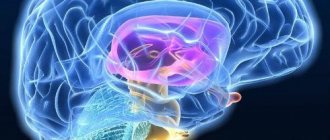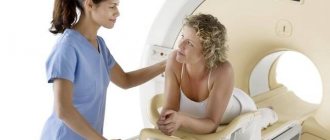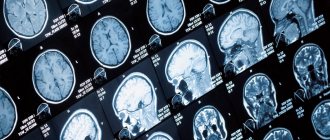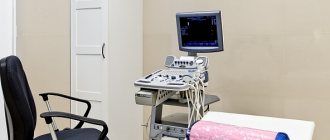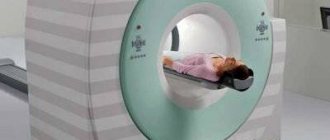The procedure during which a special needle is inserted into the subarachnoid space is called a lumbar puncture (spinal, lumbar or spinal puncture, lumbar puncture or spinal puncture). The main purpose of the procedure is to collect cerebrospinal fluid (CSF) for further research, which will identify the exact causes of nervous diseases, infections and systemic pathologies. Lumbar puncture is also performed for therapeutic purposes. Before carrying out the procedure, it will be useful to know in what cases it is indicated and when it is prohibited. And when studying the technique of performing a lumbar puncture, the patient will understand that the manipulation is not dangerous to health. However, there is a possibility of some complications after it.
Basic information
Spinal cord puncture is a therapeutic and diagnostic procedure during which cerebrospinal fluid is extracted from the subarachnoid space through a special needle.
There is an opinion that lumbar puncture is dangerous, since during it the spinal cord can be damaged. To understand that this is not so, you need to delve a little deeper into embryology.
During fetal development, the central nervous system, which consists of the brain and spinal cord, develops from the fetal neural tube. All components of the nervous system (neurons, peripheral nerves, subarachnoid cisterns, cerebrospinal fluid, etc.) have the same origin. Therefore, by the composition of cerebrospinal fluid from the caudal region of the back, the condition of the entire nervous system can be assessed.
The spinal cord ends at the level of the 2nd lumbar vertebra
During fetal development, vertebrae grow faster than nerve tissue. For this reason, the spinal cord ends at the level of the 2nd lumbar vertebra with the conus medullaris. Further, thin threads extend to the junction with the sacrum.
Thanks to this structure, it is safe to puncture the spinal canal in this place. According to doctors, the phrase “spinal cord puncture” is incorrect, since there is no spinal cord at the puncture site, only its membranes and cerebrospinal fluid are located here.
Reference. The volume of cerebrospinal fluid in an adult is approximately 120 ml. It is updated after 5 days.
Not all people understand why they take a spinal cord puncture. Lumbar puncture is done to achieve the following goals:
- Study of biological material in laboratory conditions for glucose, certain cells, proteins and other components.
- Determination of cerebrospinal fluid pressure.
- Removing excess cerebrospinal fluid.
- Introduction of drugs into the nervous system.
Now you know why a cerebrospinal fluid puncture is taken.
No ads 1
How to take a puncture
For this reason, spinal cord puncture is also called lumbar puncture.
To carry out the puncture, special long Beer needles of reinforced design (thick-walled) with a mandrin (stiletto) are used.
Preparation for puncture
Before collecting cerebrospinal fluid for analysis, it is necessary to conduct an examination:
- pass general and biochemical blood and urine tests;
- do a blood coagulogram;
- change fundus pressure and intracranial pressure;
- for neurological disorders, cerebral signs indicating dislocations - CT or MRI of the brain;
- other tests prescribed by your doctor.
How is a spinal cord puncture performed?
The patient lies on his side on a hard couch, bending his knees to his stomach and bending his back as much as possible
A sitting position is also allowed. The surface of the lower back is treated with iodine solution. The needle is inserted into the intervertebral space between the second and third (third and fourth in children) vertebrae, at the level of the spinous processes, slightly at an upward angle. At the beginning of the needle's advancement, an obstacle is soon felt (these are the vertebral ligaments), but when 4 to 7 cm have been passed (about 2 cm in children), the needle falls under the arachnoid membrane and then moves freely. At this level, the progress stops, the mandrin is removed, and by the flow of drops of colorless liquid from it, it is confirmed that the goal has been achieved. If the liquid does not drip, and the needle rests on something hard, it is carefully returned back without completely removing it from the subcutaneous layer, and the injection is repeated, slightly changing the angle. Cerebrospinal fluid is collected into a test tube, the sampling volume is 120 g. If you need to examine the epidural space to see adhesions and tumors, or the condition of the spinal ligaments, a three-channel test is performed (saline is supplied through one channel, a needle with a catheter is supplied through the second, a microchamber is supplied through the third review). Anesthesia or therapy is administered by administering an anesthetic or medicinal drug through a catheter.
Does it hurt when taking a puncture?
Many patients are afraid that it will hurt. You can calm them down: before the analysis itself, local anesthesia is usually performed: layer-by-layer injection of novocaine (1 - 2%) into the area of the future puncture. And even if the doctor decides that local anesthesia is not needed, in general the puncture is no more painful than a regular injection.
Complications and consequences of spinal cord puncture
After the puncture, the following complications are possible:
- On the membranes of the spinal cord, when subcutaneous epithelial cells are introduced with a needle, the development of an epithelial tumor - cholesteatoma - is possible.
- Due to a decrease in the volume of cerebrospinal fluid (daily circulation volume - 0.5 l), intracranial pressure decreases, and a headache may occur for a week.
- If nerves or blood vessels are damaged during a puncture, the consequences can be very unpleasant: pain, loss of sensitivity; formation of hematoma, epidural abscess.
However, such phenomena are extremely rare, since spinal puncture is usually performed by experienced neurosurgeons with experience in numerous operations.
Thank you
The site provides reference information for informational purposes only. Diagnosis and treatment of diseases must be carried out under the supervision of a specialist. All drugs have contraindications. Consultation with a specialist is required!
puncture
Indications for the procedure
As mentioned, a spinal tap may be performed for diagnosis or treatment. In the first case, the procedure is carried out when it is necessary to study the composition of the cerebrospinal fluid, identify pathogens in it, measure the pressure of the cerebrospinal fluid, as well as the patency of the subarachnoid (subarachnoid) space.
In the second case, the manipulation is carried out to evacuate excess cerebrospinal fluid and introduce medications (antibiotics or chemotherapy drugs) into the spinal canal.
Indications for lumbar puncture are divided into absolute and relative. In the first case, the procedure is mandatory, and in the second, it is recommended, but the decision is made by the doctor.
Lumbar puncture must be performed in the following cases:
- Infections affecting the central nervous system, for example, meningitis, encephalitis.
- Oncological formations in the membranes or structures of the spinal cord.
- Diagnosis of liquorrhea (leakage of cerebrospinal fluid) using radiocontrast agents.
- Subarachnoid hemorrhage (bleeding under the arachnoid membrane).
Relative indications include:
- Multiple sclerosis and other pathologies in which the myelin sheath of neurons is destroyed.
- Diseases characterized by systemic damage to peripheral nerves.
- Septic vascular embolism.
- Lupus erythematosus and other systemic connective tissue pathologies.
Meningitis is often preceded by an infection, and a lumbar puncture is performed to determine its cause.
During a lumbar puncture, the presence of pathogenic bacteria in the cerebrospinal fluid can be determined.
It is necessary to take cerebrospinal fluid for examination to determine intracranial pressure, the number of neutrophil granulocytes, and the presence of pathogenic bacteria (Haemophilus influenzae, meningococcus, pneumococcus).
A lumbar puncture is done to distinguish a stroke from other pathologies and to determine the cause of its development. A spinal puncture helps determine antibodies in the cerebrospinal fluid, then doctors talk about multiple sclerosis. If tuberculosis is suspected, the cerebrospinal fluid is examined for sugar, neutrophils and lymphocytes. A spinal tap is performed to detect syphilis in asymptomatic cases.
Reference. By measuring cerebrospinal fluid pressure, hydrocephalus (water on the brain) can be detected. When evacuating 50–60 ml of fluid, most patients feel relief.
Lumbar puncture in newborns is performed if meningitis is suspected. The study will help identify the causative agent of infection (viruses or bacteria). The study will also help to identify the level of protein and red blood cells in a child, because their deficiency increases the risk of infectious diseases.
No ads 2
Do you often face the problem of back or joint pain?
- Do you have a sedentary lifestyle?
- You can’t boast of a royal posture and try to hide your stoop under clothes?
- It seems to you that this will soon go away on its own, but the pain only gets worse...
- Many methods have been tried, but nothing helps...
- And now you are ready to take advantage of any opportunity that will give you the long-awaited well-being!
An effective remedy exists. Doctors recommend >>
!
Spinal cord puncture (lumbar puncture) is one of the most complex and responsible diagnostic methods. Despite the name, the spinal cord is not directly affected, but cerebrospinal fluid (CSF) is collected. The procedure is associated with a certain risk, therefore it is carried out only in case of urgent need, in a hospital and by a specialist.
Why is a spinal cord puncture performed?
Spinal cord puncture is most often used to identify infections (meningitis), clarify the nature of a stroke, diagnose subarachnoid hemorrhage, multiple sclerosis, identify inflammation of the brain and spinal cord, and measure cerebrospinal fluid pressure. Also, a puncture can be performed to administer medications or a contrast agent during an X-ray examination to determine herniated intervertebral discs.
How is a spinal cord puncture taken?
During the procedure, the patient takes a position lying on his side, pressing his knees to his stomach and his chin to his chest. This position allows you to slightly move apart the processes of the vertebrae and facilitate the penetration of the needle. The area around the puncture is disinfected first with iodine and then with alcohol. Then local anesthesia is performed with an anesthetic (most often novocaine). The anesthetic does not provide complete pain relief, so the patient must prepare for some unpleasant sensations in advance in order to remain completely still.
The puncture is carried out with a special sterile needle up to 6 centimeters long. A puncture is made in the lumbar region, usually between the third and fourth vertebrae, but always below the spinal cord.
After inserting a needle into the spinal canal, cerebrospinal fluid begins to flow out of it. Typically, about 10 ml of cerebrospinal fluid is required for the study. Also, when taking a spinal cord puncture, the rate of its flow is assessed. In a healthy person, cerebrospinal fluid is clear and colorless and flows out at a rate of approximately 1 drop per second. In the case of increased pressure, the flow rate of the liquid increases, and it can even flow out in a trickle.
After receiving the required volume of liquid for research, the needle is removed and the puncture site is sealed with a sterile napkin.
Consequences of spinal cord puncture
After the procedure, for the first 2 hours the patient should lie on his back, on a flat surface (without a pillow). In the next 24 hours, it is not recommended to take a sitting or standing position.
Some patients may experience nausea, migraine-like pain, pain in the spine, and lethargy after a spinal tap is performed. For such patients, the attending physician prescribes painkillers and anti-inflammatory drugs.
If the puncture was performed correctly, then it does not have any negative consequences, and the unpleasant symptoms disappear quite quickly.
Why is spinal puncture dangerous?
The spinal cord puncture procedure has been performed for more than 100 years, and patients often have a prejudice against its use. Let us consider in detail whether spinal puncture is dangerous and what complications it can cause.
One of the most common myths is that during a puncture the spinal cord can be damaged and paralysis can occur. But, as mentioned above, a lumbar puncture is performed in the lumbar region, below the spinal cord, and thus cannot touch it.
There is also a concern about the risk of infection, but usually the puncture is carried out under the most sterile conditions. The risk of infection in this case is approximately 1:1000.
Possible complications after a spinal tap include the risk of bleeding (epidural hematoma), the risk of increased intracranial pressure in patients with tumors or other brain pathologies, and the risk of spinal nerve injury.
Thus, if a spinal cord puncture is performed by a qualified doctor, the risk is minimal and does not exceed the risk of performing a biopsy of any internal organ.
When is spinal tap prohibited?
Before the procedure, you need to know in what cases lumbar puncture is prohibited.
Absolute contraindications:
- Marked swelling and increase in brain volume.
- Sudden increase in intracranial pressure.
- Neoplasms in brain tissue.
- Closed hydrocephalus is a pathology in which cerebrospinal fluid cannot independently enter the subarachnoid space due to obstacles.
If there are such contraindications, a child or adult is prohibited from having a lumbar puncture. Otherwise, the risk of axial herniation of the brain increases - this is a pathology in which part of the brain is displaced into the foramen magnum. Then the work of vital areas is disrupted, which threatens the death of the patient. Herniation can occur if the doctor uses a thick needle and removes a lot of cerebrospinal fluid from the spinal canal.
Carefully! If a lumbar puncture is necessary, and the likelihood of brain herniation is high, then a minimum amount of cerebrospinal fluid should be extracted. When symptoms of pathology appear, you must immediately inject the required volume of cerebrospinal fluid using a needle.
There are other contraindications for spinal puncture:
- Presence of pustules on the lower back.
- Blood clotting disorder.
- Medicines that thin the blood (antiplatelet agents, anticoagulants).
- Blockade of the subarachnoid space.
- Bleeding due to local dilation and rupture of a vessel (aneurysm) in the brain or spinal cord.
- The period of gestation.
In the presence of such conditions, the doctor decides to perform the procedure, taking into account possible complications.
Day of the procedure
Where to go
The visit reminder you received will tell you where to go.
What to expect on the day of the procedure
During the procedure, you will lie on your side with your legs hugged, or sit leaning over a table with your back in a "C" shape. It is very important to lie still during the procedure.
The nurse will clean the lower back area with an antibacterial solution. You will then be given an injection (shot) of a local anesthetic (medicine that causes numbness) in the area so that you do not feel any pain.
After numbing the area, your healthcare provider will carefully insert a needle between two adjacent bones in your spine (vertebrae) into a space filled with cerebrospinal fluid. This fluid will begin to flow from the needle, and the doctor or nurse will collect it in a tube. If the procedure involves injecting medication into the spinal cord, this will be done after the fluid has been collected.
A bandage (Band-Aid®) will be placed over the needle insertion site.
to come back to the beginning
Technique for performing spinal cord puncture
The technique of performing a lumbar puncture is simple, but requires caution and knowledge of anatomy, so it is performed by an experienced doctor with the help of a nurse.
To perform a lumbar puncture, a special needle with a mandrel is used
First, the assistant prepares the kit for the procedure:
- gloves, mask;
- antiseptic solution that contains iodine;
- cotton wool;
- sterile underwear with a hole for the puncture site;
- Beer puncture needle with mandrin (rod for closing the lumen of the needle);
- test tubes with caps;
- adhesive plaster.
The nurse prepares the patient for the procedure and provides care after it.
Important. The main thing during a lumbar puncture is to correctly determine the puncture site. In some pathologies of the spinal column, it is impossible to pierce the spinal canal.
First, the doctor explains all the details of the cerebrospinal fluid (CSF) collection procedure to the patient. In addition, before the manipulation it is necessary to empty the bladder and intestines.
Lumbar puncture in the lateral position
In the ward, the patient must take a lying or sitting position. In the first case, the patient lies on the couch on his side, arching his back and pulling his knees towards his stomach (fetal position). In this position it is easiest to feel all the vertebrae, processes and even the distance between them.
In the second case, the patient sits on the couch and bends his torso forward to make it easier for the doctor to determine the puncture site in the lumbar spine.
Technique for performing lumbar puncture:
Symptoms and prognosis for spinal cord tumor
- The puncture point is determined, which is located between L3 – L4 (third and fourth lumbar vertebrae) or L4 – L5.
- The puncture area is wiped with an antiseptic three times, starting from the intervertebral area and continuing to increase the circumference.
- After the antiseptic has dried, the back is covered with sterile linen with a hole.
- An anesthetic injection is given; as a rule, Novocaine, Lidocaine or Ultracaine are used for this.
- The puncture needle is inserted into the previously determined space between the spinous processes at an angle, trying to adhere to the midline.
- The doctor punctures all layers in turn (for example, the yellow ligament, dura mater) until he penetrates the spinal canal. After passing through all the structures, the needle seems to fall into the spinal canal. If there is no such sensation, then you need to remove the mandrin; if the liquid leaks, then this indicates that the needle is already inside the canal. If the doctor has inserted the needle correctly, but the cerebrospinal fluid does not flow out, the patient is asked to cough or sit up to increase fluid pressure.
- Next, the liquid is collected in different test tubes of approximately 1 ml. The liquid should drain passively; do not extract it with a syringe.
- Then you need to measure the pressure, which is normally 100 - 150 mm Hg. Art. To get accurate results, you need to relax as much as possible. The pressure can be determined approximately: 60 drops of CSF is the norm. During inflammatory processes, the volume of cerebrospinal fluid increases.
- The needle is carefully removed, the puncture site is treated with an antiseptic and a sterile bandage is applied.
During a lumbar puncture, the needle is inserted between the third and fourth lumbar vertebrae at a slightly inclined angle.
The procedure lasts approximately 30 minutes.
Lumbar puncture in newborns has its own characteristics:
- The child is held in a position on his side or sitting so that the lumbar region is flexed. In this case, you need to ensure that the cervical segment does not bend, because then the patency of the upper respiratory tract worsens.
- In very low birth weight premature babies, the puncture is made in the area between the 4th and 5th lumbar vertebrae to avoid damaging the spinal cord.
- The depth of needle insertion is up to 1 – 1.5 cm.
Reference. With numerous lumbar punctures, adhesions appear, due to which the fluid may not flow out. Then the puncture is performed in an area slightly higher or lower.
The spinal puncture protocol is recorded in the medical history.
Lumbar puncture
Lumbar puncture (lumbar puncture, puncture of the subarachnoid space of the spinal cord, spinal puncture, lumbar puncture) - insertion of a needle into the subarachnoid space of the spinal cord for diagnostic or therapeutic purposes.
INDICATIONS
Lumbar puncture is performed for diagnostic or therapeutic purposes.
- For diagnostic purposes, a puncture is performed to examine the cerebrospinal fluid. When analyzing cerebrospinal fluid, color, transparency, and cellular composition must be determined. It is possible to study the biochemical composition of the cerebrospinal fluid, conduct microbiological tests, including its inoculation on special media. During a lumbar puncture, cerebrospinal fluid pressure is measured and the patency of the subarachnoid space of the spinal cord is examined using compression tests.
- For therapeutic purposes, lumbar puncture is performed to remove cerebrospinal fluid and normalize cerebrospinal fluid circulation, control conditions associated with communicating hydrocephalus, as well as to sanitize cerebrospinal fluid in case of meningitis of various etiologies and administer medications (antibiotics, antiseptics, cytostatics).
There are absolute and relative indications for lumbar puncture.
- Absolute indications: suspected infection of the central nervous system (meningitis, encephalitis, ventriculitis), cancer of the membranes of the brain and spinal cord, normal pressure hydrocephalus; diagnosis of liquorrhea and identification of liquor fistulas by injecting dyes, fluorescent and radiopaque substances into the subarachnoid space; diagnosis of subarachnoid hemorrhage when CT is not possible.
- Relative indications: fever of unknown origin in children under 2 years of age, septic vascular embolism, demyelinating processes, inflammatory polyneuropathies, paraneoplastic syndromes, systemic lupus erythematosus, etc.
CONTRAINDICATIONS
In the presence of a brain space-occupying lesion, occlusive hydrocephalus, signs of severe cerebral edema and intracranial hypertension, there is a risk of axial herniation during lumbar puncture; its likelihood increases when thick needles are used and large amounts of cerebrospinal fluid are removed. Under these conditions, lumbar puncture is performed only in cases of extreme necessity, and the amount of cerebrospinal fluid removed should be minimal. If symptoms of herniation appear during puncture (currently this is an extremely rare situation), urgent endolumbar administration of the required amount of fluid is recommended. Other contraindications to lumbar puncture are not considered so absolute. These include infectious processes in the lumbosacral region, blood coagulation disorders, taking anticoagulants and antiplatelet agents (risk of epidural or subdural hemorrhage with secondary compression of the spinal cord). Caution when performing a lumbar puncture (removal of a minimal amount of cerebrospinal fluid) is necessary if there is a suspicion of hemorrhage from a ruptured cerebral aneurysm (risk of re-rupture) and blockade of the subarachnoid space of the spinal cord (risk of the appearance or worsening of neurological deficit).
EXECUTION METHOD
Lumbar puncture can be performed with the patient lying down or sitting. The latter provision is currently used extremely rarely. Typically, the puncture is performed with the patient lying on his side with the head tilted forward and the legs bent at the hip and knee joints. The conus of the spinal cord in a healthy adult is in most cases located between the middle sections of the L1 and L2 vertebrae. The thecal sac usually ends at the S2 level. The line connecting the iliac crests crosses the spinous process of L4 or the space between the spinous processes of L4 and L5 (Jacobi line). In adults, lumbar puncture is usually performed in the L3-L4 space; in children, an attempt should be made to perform the procedure through the L4-L5 space. The skin in the area of the puncture is treated with an antiseptic solution, then local anesthesia is administered by introducing an anesthetic intradermally, subcutaneously and along the puncture. A special needle with a mandrel is used to puncture the subarachnoid space in the sagittal plane parallel to the spinous processes (at a slight angle). The cut of the needle should be oriented parallel to the length of the body. Bone obstruction usually occurs when there is a deviation from the midline. Often, when passing the needle through the yellow ligaments and dura mater, a sensation of failure is noted. In the absence of such a landmark, the position of the needle can be checked by the appearance of cerebrospinal fluid in the needle pavilion; to do this, you need to periodically remove the mandrel. If typical radicular pain appears during needle insertion, the procedure should be stopped immediately, the game should be removed to a sufficient distance and the puncture should be performed with a slight tilt of the needle towards the contralateral leg. If the needle rests on the vertebral body, it is necessary to tighten it by 0.5-1 cm. Sometimes the lumen of the needle can cover the root of the spinal cord, in this case a slight rotation of the needle around its axis and pulling it up by 2-3 mm can help. Sometimes, even if the needle gets into the dural sac, it is not possible to obtain cerebrospinal fluid due to severe cerebrospinal fluid hypotension. In this case, lifting the head end helps; you can ask the patient to cough and apply compression tests. With repeated punctures (especially after chemotherapy), a rough adhesive process develops at the puncture site. If, despite following all the rules, the appearance of cerebrospinal fluid cannot be achieved, it is advisable to attempt to perform a puncture at a different level. Rare reasons for the inability to perform a lumbar puncture are a tumor of the spinal canal and an advanced purulent process.
LIQUOR PRESSURE MEASUREMENT AND COMPRESSION TESTS
Immediately after the appearance of cerebrospinal fluid in the needle pavilion, it is possible to measure the pressure in the subarachnoid space by connecting a plastic tube or a special system to the needle. The patient should be as relaxed as possible during the blood pressure measurement process. Normal fluid pressure in a sitting position is 300 mm water column, lying down - 100-200 mm water column. Indirectly, the level of pressure can be assessed by the rate of flow of cerebrospinal fluid (60 drops per minute roughly corresponds to normal pressure). Pressure increases with inflammatory processes in the meninges and choroid plexuses, and disruption of fluid outflow due to increased pressure in the venous system (venous stagnation). To determine the patency of the subarachnoid spaces, liquorodynamic tests are used.
- Queckenstedt's test. After determining the initial pressure of the cerebrospinal fluid, compression of the jugular veins is performed for no longer than 10 s. In this case, normally the pressure increases by an average of 10 -20 cm of water column. and returns to normal 10 s after compression stops.
- During the Stukey test, pressure is applied with a fist to the abdomen in the navel area for 10 seconds, creating stagnation in the inferior vena cava system, where blood flows from the thoracic and lumbosacral spinal cord and epidural veins. Normally, the pressure also increases, but more slowly and not as significantly as with the Queckenstedt test.
REGIME AFTER LINAL PUNCTURE
After a lumbar puncture, it is customary to adhere to bed rest for 2-3 hours to avoid post-puncture syndrome caused by the continued leakage of cerebrospinal fluid through a defect in the dura mater.
COMPLICATIONS OF LUMBAL PUNCTURE
The total risk of complications is estimated at 0.1-0.5%. Possible complications include the following:
- Axial herniation (acute herniation during puncture in conditions of intracranial hypertension; chronic herniation as a consequence of repeated lumbar punctures);
- Meningism
- Infectious complications.
- Headaches that usually go away when lying down.
- Hemorrhagic complications, usually associated with blood clotting disorders.
- Epidermoid cysts as a result of using low-quality needles or needles without a mandrel.
- Damage to the roots (possible development of persistent pain syndrome).
- Damage to the intervertebral disc with the formation of a disc herniation.
Introduction into the subarachnoid space of contrast agents, anesthetics,
chemotherapy drugs, antibacterial drugs can cause a meningeal reaction. It is characterized by an increase in cytosis to 1000 cells on the first day, an increase in protein content with normal glucose levels and sterile seeding. This reaction usually regresses quickly, but in rare cases can lead to arachnoiditis, radiculitis or myelitis.
Feelings during the procedure
Many patients are interested in the question of whether it is painful to perform a lumbar puncture. If the procedure is performed correctly, the patient does not feel any significant discomfort or pain. He can feel the needle passing through the hard membranes, but there is no painful reaction. Unpleasant symptoms do not appear, since the doctor administers an anesthetic solution before the puncture.
You may feel an electric shock if the needle hits a spinal nerve. Some patients experience headaches during the procedure.
[node:field_similarlink]
Consequences of puncture
Upon completion of the lumbar puncture, it is impossible to get up and move independently; the patient is transported lying down to the ward, where he will spend several more hours lying on his stomach without a pillow. Children of the first year of life are placed on their backs with a cushion under their buttocks. Every 15 minutes, an anesthesiologist or surgeon enters the room and notes the heart rhythm, pressure, and body temperature.
For the first 2-3 days after the puncture, bed rest is prescribed, which is canceled only if the patient’s condition is satisfactory and there is complete confidence in the absence of complications. The most common side effect of the procedure is headache, which often requires the use of analgesics. Cranialgia is not life-threatening; it goes away within a week at most, but the attending physician should be informed of such a symptom.
A spinal tap is an invasive procedure that can cause complications. According to statistics, consequences from the procedure can occur in 0.3% of patients, and most often they are associated with an insufficiently adequate assessment of the need and obstacles, violation of the procedure technique, and the use of wide needles.
Complications of puncture are:
The phenomena of meningism develop due to irritation of the membranes of the brain and are manifested by symptoms of their inflammation; Infectious processes (arachnoiditis, meningitis) if precautions are not observed during puncture; Cranialgia; Trauma to the spinal roots with severe and persistent pain, usually due to technical errors; Bleeding due to hemocoagulation disorders or taking certain medications; Wedging of stem structures due to intracranial hypertension or multiple punctures; Injury by a needle to the intervertebral disc with the development of hernial protrusion; Myelitis, radiculitis, arachnoiditis with the administration of antibacterial drugs, cytostatics, analgesics, radiocontrast agents (manifested by excess cellularity and an increase in the protein content in the cerebrospinal fluid in the absence of microbes and normal sugar concentration).
In general, lumbar puncture can be considered a safe method of diagnosis and treatment, but only if the puncture algorithm is followed and its feasibility is adequately assessed. Patients should not be afraid of manipulation, because its result can answer many complex questions regarding the nature of the pathology, the possibility of treatment and prognosis in the future.
Rules of conduct after puncture
It is recommended to lie on your stomach for 3 hours after a lumbar puncture. It is also prohibited to lift heavy objects or subject yourself to physical stress. If these rules are followed, the patient will be able to avoid leakage of cerebrospinal fluid from the hole.
If medications are administered into the subarachnoid space, the patient must remain in bed for at least 3 days.
Carefully. If there is an increase in temperature, numbness or fluid discharge from the hole after the puncture, you should visit a doctor.
Types of puncture in gynecology
There are several types of punctures that are used for the diagnosis and treatment of female diseases:
- Breast puncture. It is prescribed in the presence of nodules, ulcers or any seals, changes in skin tone, or strange discharge from the nipples. The procedure allows you to determine the presence of tumors of different etiologies and diagnose their nature. Some preliminary preparation is required. For example, a week before the puncture you should not take Aspirin or any other medications that help reduce blood clotting. After the puncture, a woman may feel slight discomfort, which goes away after a few days.
- Retrieval of eggs for artificial insemination. The procedure should be carried out 35 hours after the injection of human chorionic gonadotropin. The puncture is performed transvaginally. A special needle is also required. The entire process is controlled by ultrasound. This procedure requires certain skills, so you need to look for an experienced specialist for this. In general, it is considered practically painless, but in order to avoid complications after the puncture, the woman is given anesthesia.
- Cardocentesis. This procedure is important for determining congenital pathologies or infectious lesions of the fetus. To do this, blood is taken from the umbilical cord. It is allowed from the 16th week, but in order not to harm the baby and to get a more accurate result, a puncture is prescribed from 22 to 24 weeks. A puncture is made through the pregnant woman's abdomen into the umbilical cord vessel. All devices must be sterile. For puncture, a special needle with an attached syringe is taken. This method of determining infection or developmental abnormalities is considered the most accurate, but is used only if other diagnostic methods are ineffective.
- Ovarian cyst puncture. This procedure is used for diagnostic as well as therapeutic purposes. The procedure requires general anesthesia, which is administered intravenously. The instruments are inserted through the vagina. The needle enters through a special sensor. An aspirator is attached to it. The instrument is used to suction fluid from the cyst cavity. The biomaterial is sent to the laboratory for cytological and histological analysis. After there is no more fluid left in the cyst, a small amount of alcohol is injected into it, gluing the walls of the formation. In most cases, this procedure allows you to completely get rid of the cyst, although in rare cases relapses are possible. After the puncture, the woman returns home on the second day. In general, the manipulation does not cause pain, however, the patient must be completely motionless, so anesthesia is necessary.
- Abdominal puncture. It is carried out through its wall or posterior vaginal fornix. The procedure is used to diagnose gynecological pathologies, as well as to prepare for surgery. Since such a puncture is very painful, it must be performed with anesthesia. Moreover, anesthesia can be local or general. Before the puncture is performed, the intestines and bladder must be empty.
Research results
As a rule, CSF is collected in 3 containers, which are then sent for general, biochemical and microbiological analysis.
Doctors pay attention to the color of the cerebrospinal fluid:
- Bloody - an admixture of blood in the fluid may indicate blood leaking into the cavity between the arachnoid and pia mater.
- The yellowish color of the CSF indicates long-term development of hemorrhagic processes, for example, subdural hematoma (accumulation of blood between the brain and membranes), metastases in the meninges, blockage of the cerebrospinal fluid pathways.
- Grayish-green – neoplasms in the brain.
- Transparent – the person is healthy.
The ventricular mass is carefully examined, doctors measure pressure, determine the amount of protein, glucose, etc.
Normal results of a cerebrospinal fluid test look like this:
- liquid color – transparent;
- protein level – from 150 to 450 mg/l;
- glucose concentration – from 4 to 60% of the blood level;
- there are no atypical cells;
- leukocytes – up to 5 in 1 mm³ of blood;
- neutrophils and red blood cells are absent;
- pressure – from 150 to 200 mm Hg. Art.
Important. If the cerebrospinal fluid pressure is higher than normal, then decongestant therapy should be performed. If this indicator is underestimated, then this indicates brain pathologies.
Red blood cells, neutrophils and pus indicate blood diseases. Atypical cells are found in brain tumors, and sugar levels decrease in bacterial meningitis.
Lumbar puncture will allow timely identification of many dangerous diseases and treatment.
No ads 3
Complication of spinal cord puncture
Consequences of puncture are rare (in 1–5 patients out of 1000):
- displacement and herniation of brain tissue;
- the appearance of symptoms of meningitis due to irritation of the meninges;
- neuroinfections as a result of violation of antiseptic rules by doctors;
- severe headache may be associated with impaired CSF circulation;
- severe pain along a certain nerve when the spinal cord roots are damaged;
- hemorrhages due to bleeding disorders or taking medications that thin the blood;
- epidermoid cyst;
- meningeal reaction - changes in CSF parameters after the administration of medications or contrast solutions.
These are the main complications that can occur after a lumbar puncture.
Possible complications
Despite the fact that a lumbar puncture removes a small volume of cerebrospinal fluid, which is quickly restored, this can still cause a decrease in intracranial pressure and the occurrence of short-term headaches. This side effect occurs on average in 15% of cases.
These headaches go away on their own within 3 to 5 days and are not dangerous.
Other complications can be associated with medical errors, which is practically impossible given the highly qualified specialists of the International Clinic Medica24.
The material was prepared by Natalya Yuryevna, a neurologist at the International Clinic Medica24, Candidate of Medical Sciences Lasch.
Cost of the procedure
Prices for spinal puncture depend on the level of the clinic, the complexity and nature of the procedure.
In Moscow, the cost of lumbar puncture differs depending on the medical institution:
- Clinic "El. En." — 5400 rubles.
- "PENTA-CLINIC" - 3350 rubles.
- Medical - 2300 rubles.
- Central Clinical Hospital No. 2 of JSC Russian Railways - 1,700 rubles.
- Clinical Hospital No. 119 – 1500 rubles.
- Children's Clinical Hospital named after Semashko - 1450 rubles.
The higher the qualifications of the doctors, the better the equipment of the medical facility and the more complex the procedure, the more you will have to pay for it.
Before the procedure
Tell your healthcare provider if:
- you are allergic to iodine (which is a component of Betadine®);
- you are sensitive to or allergic to any adhesive materials, such as adhesives;
- you are taking blood thinning medications. These medications include heparin, warfarin (Coumadin®), clopidogrel (Plavix®), enoxaparin (Lovenox®), and tinzaparin (Innohep®). There are others, so be sure to tell your doctor about all the medications you take.
to come back to the beginning
Reviews
Almost all patients respond positively to lumbar puncture. The procedure does not cause significant discomfort or pain, but provokes mental stress. In most cases, there are no complications after a lumbar puncture, although it all depends on the skill level of the doctor.
Irina, 45 years old: “I was treated several times in an inpatient setting for meningitis, and then a lumbar puncture was prescribed. It was scary the first time, but then I realized that there was nothing wrong with it. I felt a slight pain only during the anesthetic injection, then there was a sensation of interference in the lower back, but it became numb. The main thing is to find an experienced doctor, because you can remain disabled if you catch a nerve.”
Ekaterina, 34 years old: “I had a lumbar puncture twice for suspected meningitis. There were no serious complications after the procedure, although after the first time I had a headache. The second time I asked the doctor to make a puncture with a smaller needle, then I didn’t feel anything at all, and there was no headache.”
Igor, 44 years old: “I had to do a spinal tap 3 times. During the procedure, pain is not felt, only movement in the lumbar region was heard, this causes psychological discomfort. I tried to distract myself and stopped paying attention to it. There were never any complications after the study.”
Read also
- Folk remedies for the treatment of osteoporosis
Osteoporosis is a bone disease that leads to brittle bones, bone separation, and loss of large areas of bone tissue. In these cases, the bones become incredibly fragile and...
- Plantar fasciitis: symptoms, treatment methods, prevention
Fasciitis is an inflammatory process in the plantar fascia, which envelops the muscles of the foot. As a result of inflammation, acute pain appears in the heel area, the functions of the foot are disrupted - this can...
- Spinal osteochondropathy: causes, diagnosis, treatment
Osteochondropathy is the development of a pathological process in bone or chondral tissue, most often in young people living in cold and humid climates. Common causes of destruction...
- Treatment of secondary osteoporosis
Osteoporosis is a systemic disease in which thinning of bone structures occurs due to impaired calcium metabolism in the body. Osteoporosis can be primary or secondary.
Victor Alexandrovich
2014-09-28 13:03:57
Good afternoon, my age is 58 years old. Like the others, diseases of the cervical and lumbar spine. I underwent a course of treatment at the clinic with Dr. Sorokin. The feeling is unforgettable! In both sections (in the neck and in the lower back) there was a protrusion, and just below there was a hernia. It helped almost immediately: after 2 sessions. Now... Read more
- Dmitriy
2015-12-14 09:39:45
For a very long time I chose a clinic for the treatment of intervertebral hernia, based on reviews I settled on Bobyr’s clinic, now I understand that I did it not in vain, although the treatment was not easy, the result is still very good, for this I thank Mikhail Anatolyevich Bobyr and the rest of the staff, this very… Read more
- Elena
2020-06-19 15:48:54
I am immensely grateful to Evgeniy Yuryevich Zolotarev for his help in treating my mother. With his help, she recovered perfectly. The improvement is obvious. I started walking, the pain gradually went away, my leg did not swell much. Many thanks to such wonderful doctors as Evgeniy Yurievich! I wish your clinic, everyone... Read more
- Novel
2016-02-24 16:18:55
The neurologist advised me to go to the Bobyrya clinic, I chose the one that is closer, which is located in Mitino, at first glance everything seemed unprepossessing, I went straight for a consultation with subsequent treatment, usually you need to make an appointment a week in advance, but there are doctors with a schedule convenient for me, a treatment session … Read more
Main conclusions
As you can see, lumbar puncture is an important and also informative diagnostic and treatment procedure. Most often it is prescribed for neuroinfections, suspected subarachnoid bleeding, malignant process, autoimmune pathologies of the nervous system. It is contraindicated in cases of severe cerebral edema, a sharp increase in intracranial pressure, the presence of a large tumor in the brain, etc. There are some features of performing a lumbar puncture for children and adults. To ensure that the procedure goes without complications, you need to contact an experienced specialist. After a lumbar puncture, the cerebrospinal fluid is sent for research, during which dangerous diseases of the nervous system can be identified and treated. Most patients who have had a lumbar puncture are satisfied with its results; they claim that there is no discomfort or pain during it.
Puncture for diagnostic and treatment purposes
During this procedure, for diagnostic purposes, a biological sample is collected using a thin needle, which is then sent for laboratory testing. If a therapeutic goal is pursued, then a medicinal product is injected into the affected area using a syringe or air or liquid is extracted, for example, from a tumor. The puncture can be performed on different organs of the body. Let's take a closer look at a few of these procedures.
Abdominal puncture
In this case, it is used to remove ascites or to administer special substances. Sterile instruments are used for puncture:
In the morning before the procedure, it is necessary to cleanse the intestines with an enema. The manipulation in this case is carried out in a sitting position. The skin is treated with novocaine in the puncture area. The liquid is taken from the cavity with a trocar, which makes a puncture and subsequent suction. The sample is placed in a test tube, and the puncture site is sealed with an aseptic sticker. The entire procedure is carried out under ultrasound guidance.
Bone marrow puncture
It is performed to obtain a bone marrow sample from the calcaneus or ilium, as well as the sternum and tibial epiphysis. A syringe with a long needle is used to take a sample. Depending on the puncture site, the patient lies on his back or sits down; before this, it is necessary to clear the puncture site from clothing. The doctor uses a needle to puncture the skin and remove a sample from the bone. During its implementation, the patient may feel a slight nagging pain.
Lumbar puncture
In this case we are talking about taking cerebrospinal fluid. Puncture can be performed for both diagnosis and treatment. It is carried out using a regular needle. This procedure is often performed on children. The patient lies on his left or right side, with his legs pressed to his stomach and his head to his chest. The doctor then inserts a needle between the 3rd and 4th lumbar vertebrae. If the procedure is performed for diagnostic purposes, 20 ml of fluid is taken. It is placed in a test tube and sent to the laboratory. There, all its characteristics are studied in detail, including the degree of transparency. After the manipulation, the patient should lie on his stomach for three hours, placing a pillow under his stomach. But it is best to stay in this position for a day. After the puncture, headache or weakness, nausea and back pain are possible. If such symptoms appear, you should consult a doctor. Hexamine, phenacetin and amidopyrine will be prescribed.
Needle biopsy
Used for biopsy of soft tissues of internal organs, such as:
In this case, 3 types of needles can be used: cutting, aspiration and modified. Both diagnostic and therapeutic punctures can be performed; the price in this case will depend on the purpose of the procedure. Depending on which needle will be used, the doctor will select a specific puncture technique. In terms of implementation, it is not much different from the above methods. A puncture is made through which a sample is taken for laboratory testing or a medicinal solution is injected.
Where can a puncture be done?
This procedure can be completed in our center. We are ready to perform it for both therapeutic and diagnostic purposes. Our staff consists of experienced specialists who have been carrying out similar procedures for many years. By contacting our center, you will get quick results. Come to us, we will definitely help you.
